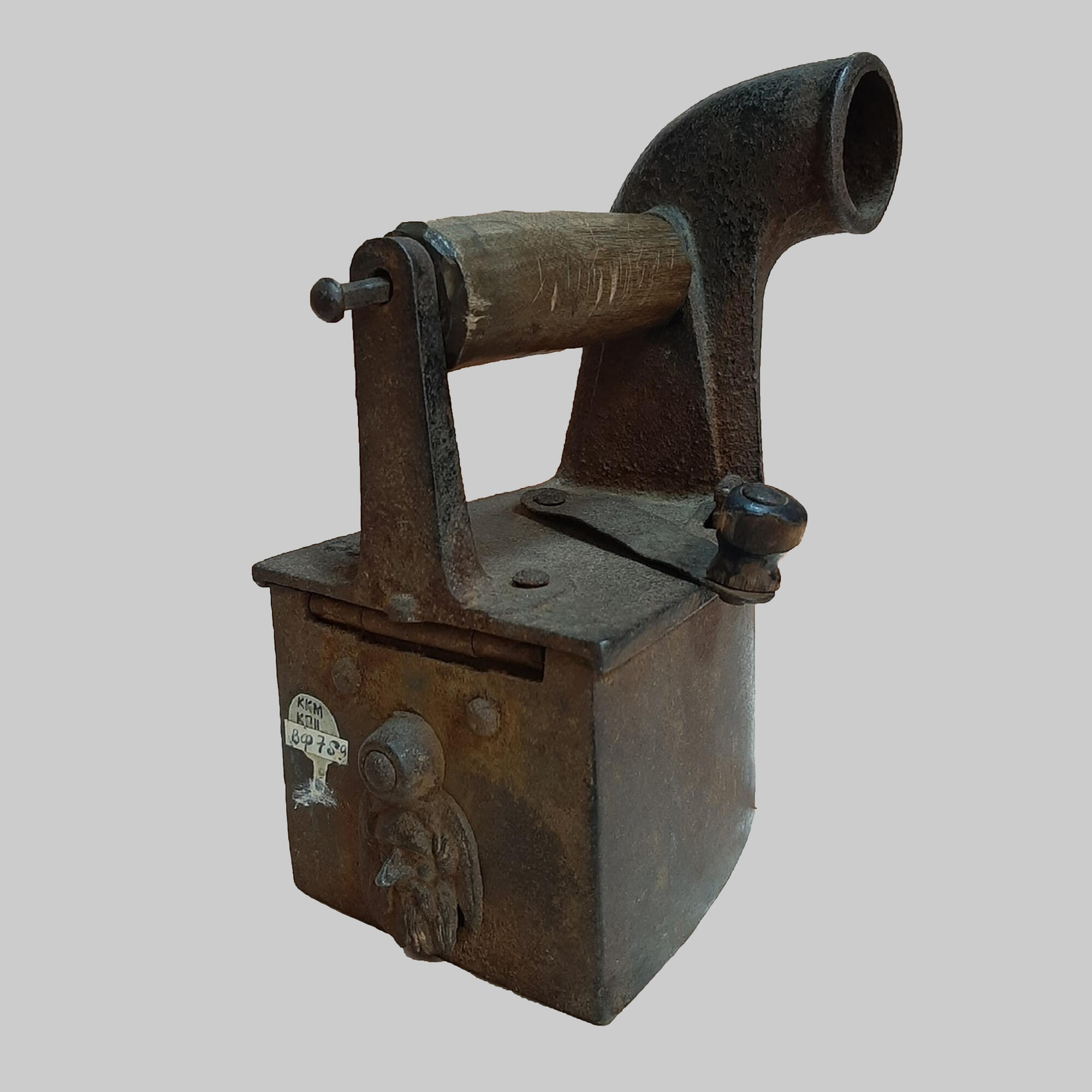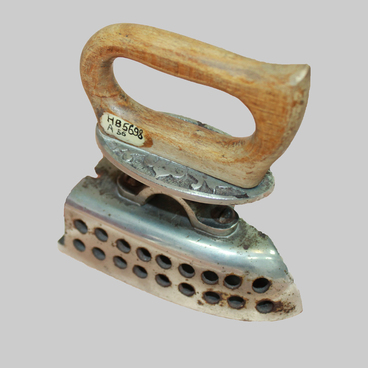‘In the Linen Country, on the Sheet River, a steamer sails back and forth, and behind it, there is such a smooth surface that not a wrinkle can be seen.’ All Soviet children knew the correct answer to this riddle of Samuel Marshak. It was a charcoal or oven iron. Red-hot birch coals were laid inside this iron. It really looked like a steamer. Smoke was pouring out of the chimney at the top. But the pipe did not appear immediately. At first, for better heating, special holes were made on the sides of the charcoal iron. To increase ventilation, you had to swing the iron back and forth. Such a device was not very convenient and safe. Sparks and small embers constantly flew out of the brazier, thus leaving scorch marks and holes on the clothes. To avoid this trouble, they came up with a blind iron design, similar to a miniature stove with a pipe and a blower with a flap.
In our country, such an iron was first mentioned in the 17th century in the book of expenses of the Royal Court: ‘Blacksmith Ivashka Trofimov was given 5 altyns, and for that money he made an iron for the Tsaritsyn Chamber.’ Already in the 18th century, ‘wind’ irons began to be produced on an industrial scale.
The flap of the presented iron features the face of an old man. If you look closely, you can recognize the features of the Russian writer Leo Tolstoy. Why should Tolstoy be depicted on an iron? The fact is that the Church accused him of heresy and anathematized him in 1901. Tolstoy was an active critic of the authorities and the church. He wrote religious and political articles, and his followers distributed anti-Christian literature among young people in huge circulations. Tolstoy wrote: ‘The teaching of the church is theoretically an insidious and harmful lie, but in practice it is a collection of the grossest superstitions and witchcraft…’
Naturally, the writer’s activity aroused indignation among sincerely believing people. In 1883, in one of the village churches of the Kursk province, a painting with scenes of the Last Judgment appeared, in which Tolstoy was depicted burning in hell. Irons with portraits of Tolstoy were the same “response” to his anti-Church activities. At the turn of the 20th century, the masters of the city of Verey began to make irons with the image of the writer on the flap. The portrait was sketchy, but still recognizable. The masters attached a long nose to the count, which served as a handle for the flap. From now on, the owner of the iron could pat him on the nose and even spit in the face of the heretic, thus checking whether the iron was well warmed up.
In our country, such an iron was first mentioned in the 17th century in the book of expenses of the Royal Court: ‘Blacksmith Ivashka Trofimov was given 5 altyns, and for that money he made an iron for the Tsaritsyn Chamber.’ Already in the 18th century, ‘wind’ irons began to be produced on an industrial scale.
The flap of the presented iron features the face of an old man. If you look closely, you can recognize the features of the Russian writer Leo Tolstoy. Why should Tolstoy be depicted on an iron? The fact is that the Church accused him of heresy and anathematized him in 1901. Tolstoy was an active critic of the authorities and the church. He wrote religious and political articles, and his followers distributed anti-Christian literature among young people in huge circulations. Tolstoy wrote: ‘The teaching of the church is theoretically an insidious and harmful lie, but in practice it is a collection of the grossest superstitions and witchcraft…’
Naturally, the writer’s activity aroused indignation among sincerely believing people. In 1883, in one of the village churches of the Kursk province, a painting with scenes of the Last Judgment appeared, in which Tolstoy was depicted burning in hell. Irons with portraits of Tolstoy were the same “response” to his anti-Church activities. At the turn of the 20th century, the masters of the city of Verey began to make irons with the image of the writer on the flap. The portrait was sketchy, but still recognizable. The masters attached a long nose to the count, which served as a handle for the flap. From now on, the owner of the iron could pat him on the nose and even spit in the face of the heretic, thus checking whether the iron was well warmed up.



